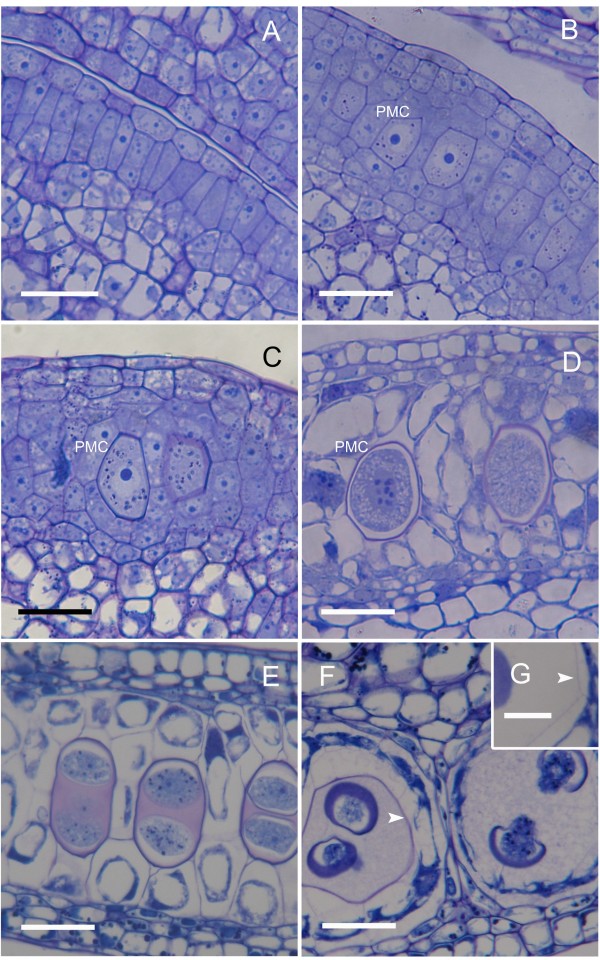Figure 1.
Microsporogenesis of Annona cherimola. (A) Uniseriate row of arquesporial cells. (B) Septal and pollen mother cells (PMC), showing a conspicuous wall, alternate in the sporogenous tissue. (C) PMC increase in size and starch grains are visible. (D) Starch grains vanish, a translucent layer appears in the PMC wall, and PMC starts meiosis. The tapetum vacuolates and the tapetal chambers are apparent. (E) Following meiosis, starch grains accumulate again in the young microspores, which are surrounded by callose. (F) The young microspores, with an incipient exine, appear to float and turn within the still remaining PMC wall (arrow) that holds the four microspores together. (G) Detail of PMC wall (arrow). Longitudinal sections of the anthers stained with PAS and Toluidine blue. Bar = 20 μm.

